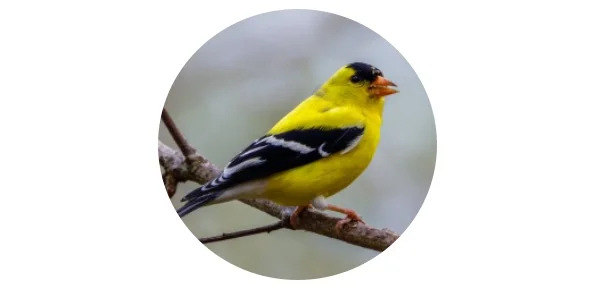Massachusetts State Bird: Description, Pictures, & Fun Facts
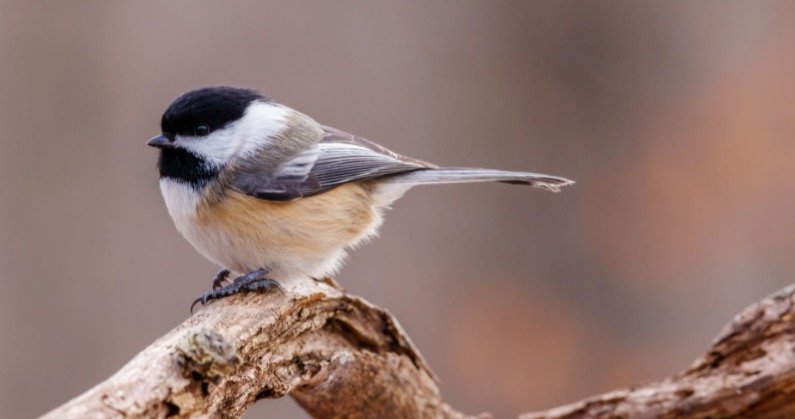
Table of Contents
Massachusetts State Bird: All You Need To Know
Massachusetts is the seventh-smallest state and the sixteenth most populated in the United States. Despite its modest size, Massachusetts has a wide range of landscapes, including extensive coastal plains and steep rural districts. There is no state animal in Massachusetts; instead, the right whale is the official marine mammal; nonetheless, what is the official Massachusetts State bird?
The Black-Capped Chickadee (Poecile atricapillus) designated as the Massachusetts’s official bird in 1941. The little, black and white bird with an enormous head embraces the humans of Massachusetts with zeal. The chickadee, also known as a black-cap titmouse, prefers deciduous and mixed woodlands. This chickadee mostly feeds on insects, but it also consumes plants and adores poison ivy.
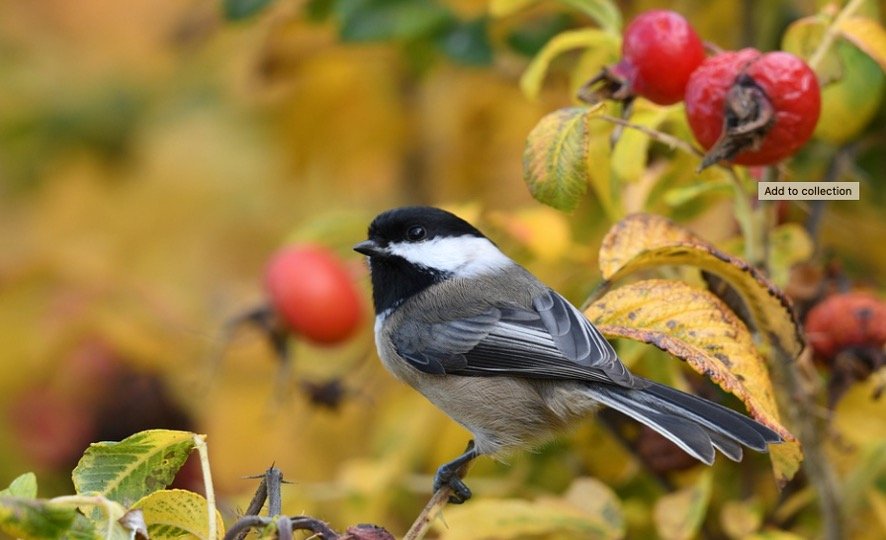
Why is Black-capped Chickadee Massachusetts State Bird?
Massachusetts picked the wild Black-Capped Chickadee as its official bird but did not explain why in its statute. This bird established itself in all the state’s wooded habitats, including cottonwood groves, deciduous and mixed forests, open woodlands, willow thickets, and even its parks.
The best argument is that its attractiveness took on and appealed to the citizens of the state. The departing bird approaches people boldly. The black-capped chickadee pursues life with enthusiasm, making it a welcome addition to the state’s population.
When was Black-capped Chickadee designated as Massachusetts State Bird?
On March 21, 1941, the Massachusetts legislature designated the black-cap chickadee as the official bird. The Black-Capped Chickadee is the both Massachusetts’s and Maine’s official bird.
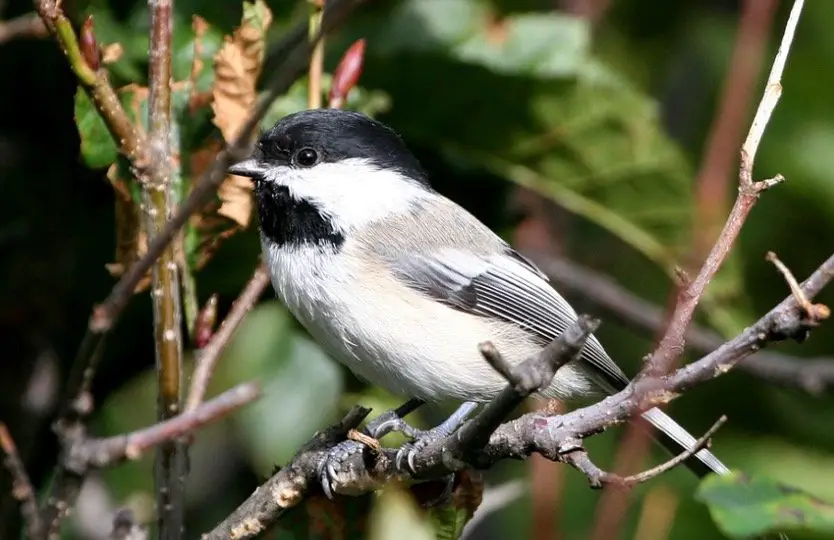
What does Massachusetts State Bird look like?
With its white or cream-breasted feathers, this songbird entertains from the trees of Massachusetts, as if wearing a tuxedo or a fine suit. It has certain distinctive elements, such as a V-shaped black band.
The black-capped chickadee has a silver beak and a black face and forehead. Its stomach is usually cream-coloured or white, while its back is a grey version of the same hue. The tail and wings of this bird are grey and black.
Both sexes grow to be roughly 4.7 inches to 5.9 inches in length. The wingspan ranges between 7.5 inches to 8.7 inches. These little birds weigh just a few grams. 3175 ounces up to.4938 ounces, Their wingspan ranges from 6.29 to 8.26 inches.
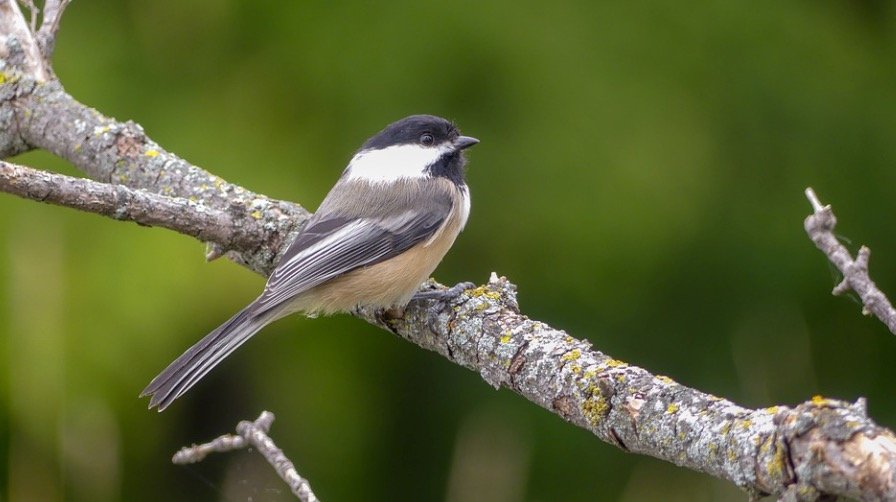
How do Massachusetts State Bird behave?
The Black-Capped Chickadee is a life partner for the pleasant, gregarious chickadee. They do not have intricate mating rituals like some birds. The male will drive away invading male birds, but no courtship dance or song has been seen by experts.
The birds do engage in mate feeding. The birds form pairs and separate from the group. They build their nests together, usually in tree holes. They love partly rotting wood holes because they give a softer basis.
The female prepares the next for breeding by adding moss and other soft substances. This process takes roughly a week. The mother bird lays around six eggs, however the brood might vary from one to eleven eggs.
She incubates the eggs for 12 days while the guy feeds her. When he finds appropriate foods, he may summon her from the nest for feeding, or she may call him to bring her food.
When their baby bird hatch, the mother takes care of them while the male hunts and forages for food to come back to the nest to feed the whole family. The youngsters are fed by both parents.
Baby black-capped chickadees develop swiftly, leaving the nest for the first time at 16 days. The chicks go out on their own to gather food around 10 days after their first flying excursion.
These birds have an average lifetime of two to three years, although the longest recorded life span for this species is 11 years and six months. They only reproduce once or twice a year.
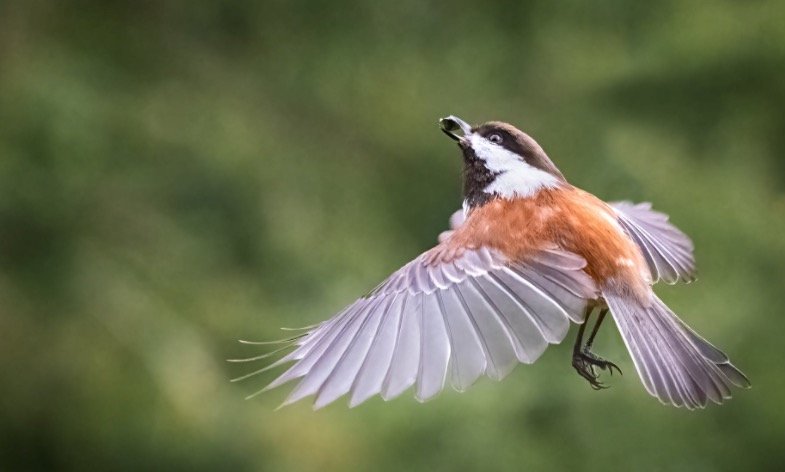
Do Black-capped Chickadees form communities?
Nuclear families of black-capped chickadees exist. These monogamous birds are life partners. They do fly as a flock throughout the winter, but they utilize this group travel to meet and mate. They choose a mate from the flock.
Furthermore, they construct a nest together after they’ve mated. This bird will nest in birdhouses as long as they are placed high enough to prevent predators – between four and 15 feet in height. Place a few wood chips inside the birdhouse to make it more appealing.
The black-capped chickadee migrates for the winter in search of a suitable nesting location. They want to remain in their new house and raise their family there. Their nesting season starts in April and ends in June. Their flocks are usually composed of a dozen or fewer birds.
There are several adult couples, a few lone adults, and some adolescents in it. From August to February, the flock gathers around a dominating pair to create a feeding area.
They interact with other birds such as the Tufted Titmice, Downy Woodpecker, and White-Breasted Nuthatch when flying the territory.
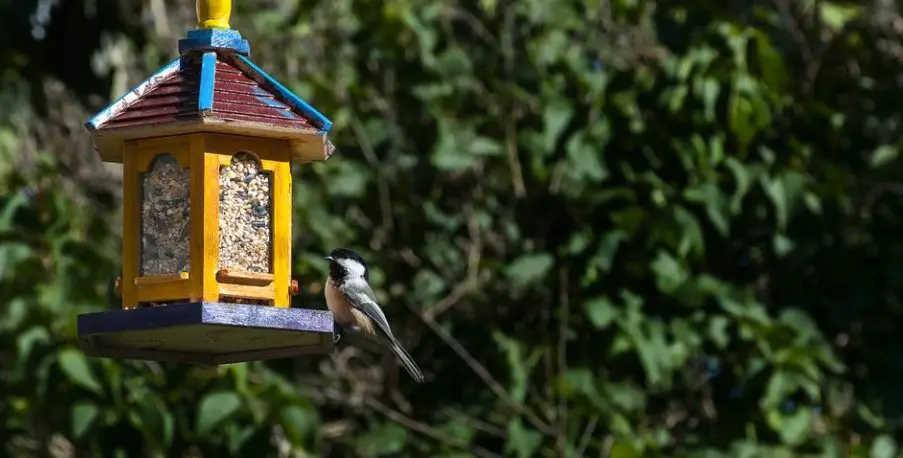
What do Black-capped Chickadees eat?
As strange as it may seem for a bird’s diet, black-capped chickadees like meat. During the winter, insects, insect larvae, and egg cases make up almost half of their food. During the summer, that figure rises to 80%.
Because they eat caterpillars, canker worms, and spruce bud worms, they are useful birds. Place a suet feeder in your yard to attract them to your bird feeder or birdhouse. You can also attract them to your feeders by using black oil sunflower seed.
The black-capped chickadee is well-mannered. Because only one of these birds eats at a time, they alternate feeding at the feeder. The dominant or alpha bird eats first.
